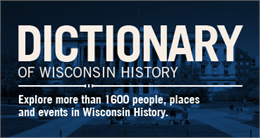Kensington Rune Stone

A large slab weighing 202 pounds found by a farmer near Kensington, Minn., in 1898 and on which was carved in ancient Norse characters (runes) the following text [translation by Robert Nielsen, 2001]:
[on its face:] "8 Geats [South Swedes] and 22 Norwegians on acquisition venture from Vinland far to the west We had traps by 2 shelters one day's travel to the north from this stone We were fishing one day After we came home found 10 men red with blood and dead AVM [Ave Maria] Deliver from evils.
[on its side:] I have 10 men at the inland sea/lake to look after our ship 14 days travel from this wealth/property Year of our Lord 1362"
For ten years after its discovery this stone was used by the farmer who found it as a stepping stone to his granary. It then came to the attention of scholars, who have spent the subsequent century debating whether or not it proved the Vikings arrived in America before Columbus. Although it has no direct connection to Wisconsin history, Wisconsin scholars, including Frederick Jackson Turner, played prominent roles in the controversy over its authenticity. That controversy, 1910-1960, was recounted in Minnesota History vol. 57 no. 3 (2000), pages 140-154. After decades of analysis of the stone by historians, archaeologists, geologists, linguists, anthropologists, and physicists, there is still (in 2007) no completely irrefutable proof for either side in the debate.
Wisconsin Magazine of History 24/1 (1940): 112-114; Wikipedia
Learn More
Dictionary of Wisconsin History
Explore more than 1,600 people, places and events in Wisconsin history.
